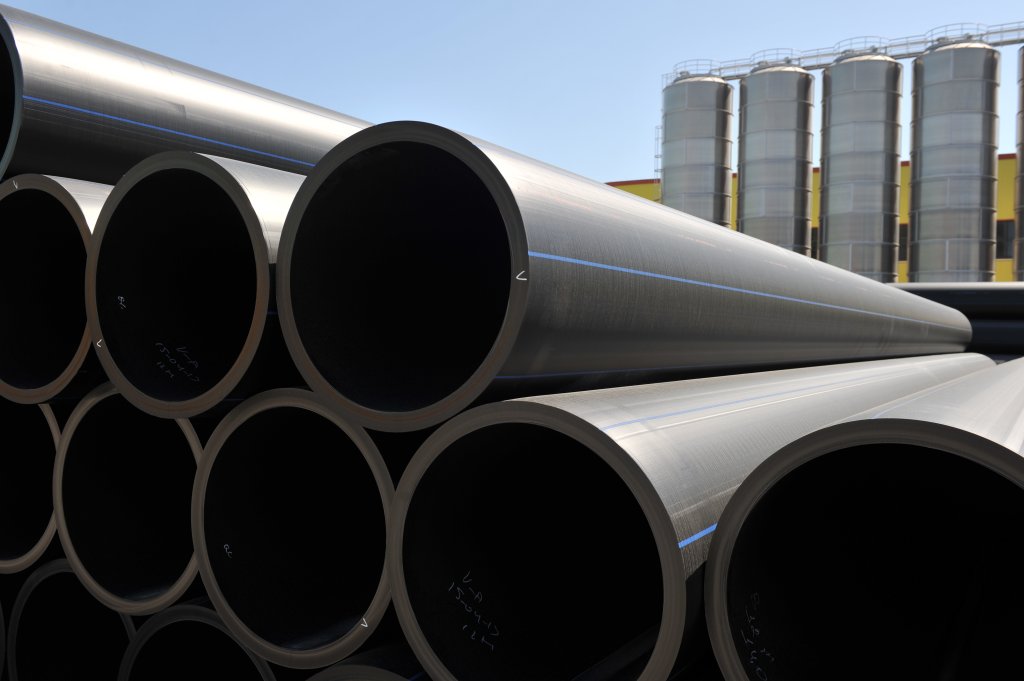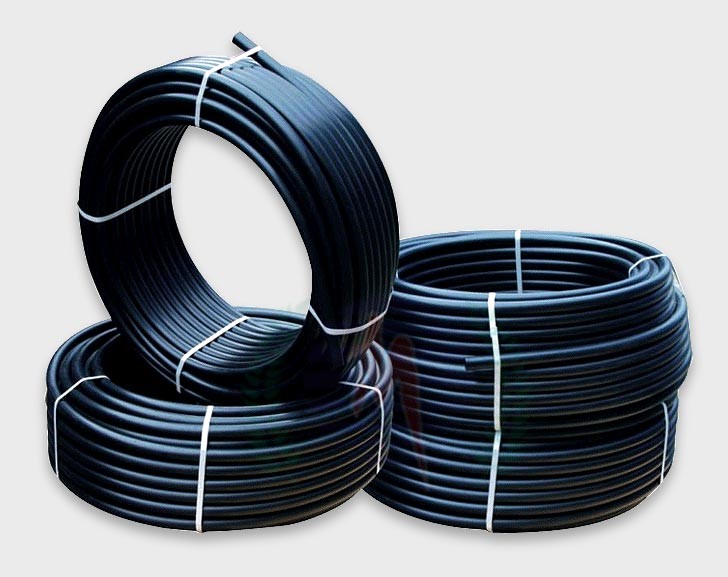Why hdpe pipe in stock Midland TX Is Essential for Local Industries
Wiki Article
Explore the Manufacturing Process Behind High-Quality HDPE Pipe and Its Applications
The production procedure of high-quality HDPE pipes is elaborate and systematic. It starts with the choice of resources that improve efficiency. Following this, ethylene goes through polymerization to develop material, which is then shaped through extrusion. Quality assurance is extremely important, guaranteeing that the end product satisfies rigid criteria. However, the journey of HDPE pipelines does not end with production. Their applications throughout various markets expose a broader importance worth checking out.Recognizing HDPE: Features and Advantages

High-density polyethylene (HDPE) is a versatile polycarbonate recognized for its resilience and resistance to numerous environmental aspects. This product shows excellent tensile stamina, making it ideal for requiring applications. Its low-density framework adds to a light-weight product, helping with ease of dealing with and installment. HDPE likewise showcases remarkable resistance to chemicals, which reduces destruction when exposed to harsh compounds.
The product's low wetness absorption further enhances its long life, making it perfect for use in pipelines and storage space containers. In addition, HDPE is immune to ultraviolet (UV) radiation, making sure that products maintain their stability also when revealed to sunlight. Furthermore, its adaptability enables for the production of detailed shapes without endangering strength. The eco-friendly nature of HDPE, frequently derived from recycled materials, includes in its appeal, promoting sustainable methods in production. Overall, these properties and benefits make HDPE a recommended option for numerous commercial and customer applications.
Resources Choice for HDPE Production
The option of basic materials for HDPE production is necessary to verify the end product meets the desired specs and quality requirements. High-density polyethylene (HDPE) is mostly generated from polymerized ethylene, stemmed from fossil gas such as natural gas or petroleum. The high quality of these feedstocks greatly affects the mechanical and thermal properties of the last HDPE.Ingredients additionally play a considerable function in enhancing HDPE's efficiency, consisting of anti-oxidants, UV stabilizers, and colorants, which boost sturdiness and resistance to environmental elements. The selection procedure have to take into consideration not just the chemical structure of the raw materials but likewise their processing qualities to guarantee reliable production.
In addition, the sourcing of resources should prioritize sustainability and conformity with environmental guidelines, as responsible techniques are vital in today's market. Eventually, cautious raw material selection lays the structure for creating high-grade HDPE pipelines ideal for varied applications.
The Extrusion Process: Forming HDPE Pipeline
The extrusion process plays a vital duty in shaping HDPE pipelines, beginning with precise material preparation techniques that assure excellent flow and consistency. Just as essential is the design of the die, which directly influences the last measurements and surface high quality of the pipeline. Together, these factors contribute greatly to the effectiveness and top quality of HDPE pipe production.Product Prep Work Techniques
Efficient production of HDPE pipelines begins with thorough product preparation methods, specifically the extrusion procedure. During this stage, high-density polyethylene resin is first dried out to get rid of moisture, ensuring suitable circulation characteristics. The material is after that fed right into the extruder, where it undergoes heating and melting, changing right into a thick state. This home heating process is thoroughly regulated to preserve the material's honesty and performance. The molten HDPE is required through a die, shaping it into a continual pipeline kind. Correct temperature monitoring during extrusion is vital, as it straight influences the material's properties and the final product high quality. Once formed, the HDPE pipe is cooled and cut to defined sizes, all set for succeeding processing and applications.Die Style Importance
Precision in die design plays a crucial role in the extrusion process of HDPE pipelines. The die works as the final shaping device, straight affecting the pipe's measurements, wall density, and surface area finish. A well-designed die guarantees uniform product circulation, lowering defects such as irregularities and weak spots. The geometry of the die need to be enhanced to fit the particular residential properties of HDPE, including its thickness and thermal habits throughout extrusion. In addition, the cooling price of the product as it passes through the die can considerably influence the pipe's structural honesty. Spending in advanced die modern technology is vital for suppliers aiming to generate high-quality HDPE pipes that meet industry requirements and client assumptions.High Quality Control Procedures in HDPE Manufacturing
Although different elements influence the quality of HDPE pipe manufacturing, efficient quality assurance procedures are vital to guarantee consistency and integrity in the last product. Trick quality assurance techniques consist of extensive product examination, verifying that the raw polyethylene fulfills well-known standards for pureness and thickness. During the extrusion process, criteria such as temperature, pressure, and cooling time are closely monitored to preserve dimensional accuracy and architectural integrityFurthermore, post-production screening is crucial; manufacturers commonly carry out hydrostatic examinations to examine the pipeline's strength and resistance to stress. Visual examinations for surface area problems even more enhance quality control. Accreditation from pertinent criteria organizations, like ASTM or ISO, gives an extra layer of integrity. By carrying out these thorough quality assurance steps, makers can reduce problems, enhance performance, and ensure that the HDPE pipes satisfy the certain requirements of various applications, inevitably resulting in client fulfillment and trust in the product.
Applications of HDPE Pipeline Throughout Industries
HDPE pipes are used across numerous fields as a result of their resilience and versatility. In water circulation systems, they guarantee reliable shipment, while in wastewater administration, they provide dependable options for waste transport. In addition, farming watering networks profit from HDPE's resistance to corrosion and adaptability, making it a perfect option for modern farming methods.
Water Circulation Solutions
A substantial number of industries depend on high-density polyethylene (HDPE) pipes for efficient water circulation systems. Understood for their durability and resistance to rust, HDPE pipelines are widely made use of in municipal water supply networks, farming watering, and industrial applications. Their light-weight nature helps with very easy handling and installment, reducing labor prices and time. In addition, HDPE pipelines can accommodate various stress degrees, making them ideal for both low and high-pressure systems. Midland TX HDPE Pipe Fittings in Stock. The adaptability of the material enables seamless integration right into existing framework, lessening the requirement for substantial excavation. HDPE's resistance to chemical leaching assurances that the water delivered stays safe and clean, making it an ideal selection for preserving the top quality of potable water throughout different sectors.Wastewater Administration Solutions
Efficient water distribution systems also lead the way for cutting-edge wastewater management solutions, where high-density polyethylene (HDPE) pipelines play a substantial function. Popular for their toughness and resistance to corrosion, HDPE pipelines are perfect for moving wastewater in different settings. Their versatility permits for simple setup in intricate environments, decreasing the demand for extensive excavation. In addition, HDPE's smooth interior surface minimizes friction, boosting circulation prices and performance. These pipelines are likewise resistant to chemical leaching, making certain that contaminants do not jeopardize the surrounding setting. Industries, stretch hose pipe towns, and therapy centers progressively rely upon HDPE pipes for their integrity and durability, making them a More Help favored option for modern-day wastewater administration systems. This flexibility emphasizes the critical significance of HDPE pipes across numerous applications.Agricultural Watering Networks
Agricultural watering networks benefit substantially from making use of high-density polyethylene (HDPE) pipes, which supply reliable and dependable water delivery to plants. HDPE pipelines are lightweight, making them easy to carry and install, while their flexibility allows for different configurations in diverse terrains. These pipes show exceptional resistance to deterioration, chemicals, and UV radiation, ensuring toughness in severe farming settings. In addition, their smooth interior surface area lessens rubbing loss, enhancing water flow and decreasing power prices connected with pumping. The durability of HDPE pipelines, usually surpassing half a century, contributes to reduce maintenance and substitute expenses. Farmers progressively count on HDPE pipelines to enhance irrigation performance and promote sustainable farming techniques, inevitably leading to boosted plant returns and resource preservation.
Future Patterns in HDPE Pipe Modern Technology
As the demand for lasting and effective facilities grows, developments in HDPE pipeline modern technology are positioned to transform different industries. Emerging patterns include the integration of wise technologies, such as sensing units and IoT capacities, which facilitate real-time surveillance of pipeline conditions, decreasing maintenance expenses and avoiding leaks. Furthermore, the advancement of innovative production methods, such as 3D printing, is allowing the production of complicated, tailored pipeline layouts that accommodate specific task needs.The focus on recycling and circular economic situation practices is driving the innovation of HDPE pipes made from recycled products, improving sustainability. Boosted jointing approaches, such as electro-fusion and mechanical fittings, are likewise boosting installment effectiveness and integrity. Finally, the growing focus on ecological regulations is pressing manufacturers to adopt greener production processes, making sure that HDPE pipes not just fulfill industry standards but also foster an even more sustainable future for infrastructure growth.
Often Asked Concerns
Exactly How Does HDPE Contrast to Various Other Plastic Products?
HDPE surpasses numerous various other plastic materials relating to resilience, chemical resistance, and adaptability. Its reduced thickness and high tensile strength make it optimal for various applications, usually exceeding choices in both performance and longevity.What Are the Environmental Effects of HDPE Manufacturing?
The ecological impacts of HDPE production these details consist of greenhouse gas discharges, energy intake, and possible contamination from producing processes. In addition, incorrect disposal can lead to soil and water contamination, increasing worries concerning long-lasting ecological results.Can HDPE Pipeline Be Reused?
Yes, HDPE pipes can be reused. Several centers approve made use of HDPE for handling, transforming it right into brand-new items. This recycling adds to sustainability initiatives, decreasing plastic waste while preserving sources and energy in the production cycle.What Is the Lifespan of HDPE Pipeline?

How Do Temperature Variants Affect HDPE Pipeline Efficiency?
Temperature variants significantly affect HDPE pipe performance, influencing flexibility and stamina. High temperature levels can lead to softening, while reduced temperatures may cause brittleness, inevitably affecting the pipeline's resilience and viability for numerous applications in varied atmospheres.Report this wiki page